Please support Game Informer. Print magazine subscriptions are less than $2 per issue
The Great Debate: Are Games Art?

[Note: This article originally ran in issue 207 of Game Informer]
Are games art? This question has been asked hundreds of times, and no one agrees on an answer. Legendary film critic Roger Ebert recently reignited the debate with a blog post he wrote in response to a speech on the subject given at USC by game developer Kellee Santiago. Entitled “Video games can never be art,” the blog post refutes several of Santiago’s points while stating his arguments for why games have failed to achieve the status of art.
“The three games she chooses as examples [Flower, Braid, and Waco Resurrection] do not raise my hopes for a video game that will deserve my attention long enough to play it,” Ebert wrote. “They are, I regret to say, pathetic. I repeat: ‘No one in or out of the field has ever been able to cite a game worthy of comparison with the great poets, filmmakers, novelists, and poets.’”
Predictably, the Internet went crazy, with Ebert’s post garnering scores of angry responses from gamers. While debate is certainly healthy, the incendiary talk hasn’t gotten us any closer to the answers.
Not everyone agrees on the definition of art – or even the definition of a game. Still, thinking about the ideas behind the games we play and what they mean is important. For this feature, Game Informer chose eight games that we feel represent games as an art form. Our writers picked these games personally, and their arguments are very personal as well. While we don’t presume to settle a debate about the meaning of art – that’s something that’s been discussed for centuries – we hope to do our part to move the debate forward.
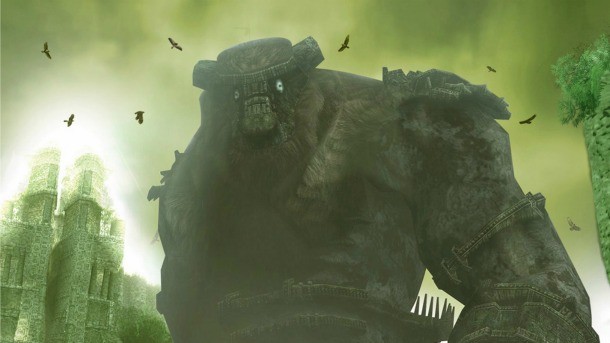
Shadow of the Colossus
by Bryan Vore
When the “are games art?” question springs up, few legitimacy-championing examples come up more than Fumito Ueda’s body of work. Both Ico and Shadow of the Colossus offer strong artistic points, but I personally lean in the latter direction.
While this PlayStation 2 title has aged a few years at this point, Shadow of the Colossus features such beautiful design and composition that it could easily compete with any other medium that’s already been inducted into the artistic fold. The forbidden land that protagonist Wander and his horse Agro explore simultaneously instills a sense of wonder and desolation in the player, sliding the effect slightly one way or the other with bleached out color in high sunlight or darkness in the black and cloudy sky.
The colossi are the true showcase. These organic creatures are clearly born out of the earth with stone bone structure and a prairie grass look to the fur. While they are amazing to look at, the most important element of these creatures is the relationship the player forms with them. Most game enemies are irredeemable demons, aliens, or mercenaries, but these behemoths force players to question the decisions the supposed “hero” is making. To resurrect the woman Wander loves, players must guide him to kill all 16 colossi in what is essentially a deal with the devil. After the first few slayings, you experience the thrill of a small human outsmarting and bringing down creatures 100 times his size. But somewhere along the way you start to feel like a poacher wiping out the last of an endangered species – especially when several of the colossi don’t even come after you until you start stabbing them. Wander’s appearance degrades with every kill as the dark essence born out of his actions flows into his body. You just want to call off the whole deal, but you must carry out Wander’s ultimately self-serving plan despite the clear and dire consequences.
The killing blow on the final colossus carries with it a swirl of emotions – satisfaction at overcoming this enormous quest, hope that your loved one will be resurrected, guilt at wiping out these majestic beings, and dread that you may have unleashed a terrible evil on the world. This complex mix of reactions is what good art is supposed to instill in people, whether a controller is plugged into it or not.
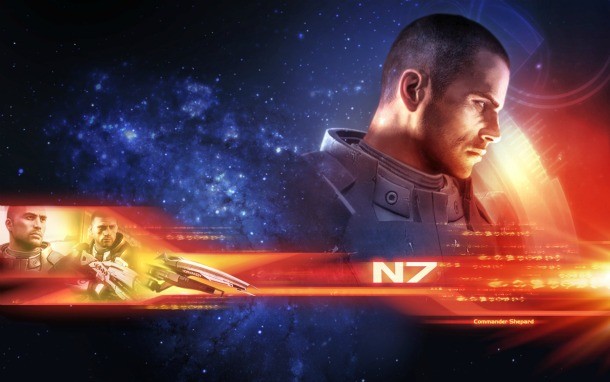
Mass Effect 2
by Adam Biessener
Shooting a bad guy gunning for you doesn’t present much of a moral quandary. Shouldering the responsibility for the well-being of a crew of people who trust you implicitly – who you consider your friends – is another matter.
Mass Effect 2 puts a personal face on the tragedy of violence by forging a bond between players and their party members with solid writing and presentation, same as any film or novel. The difference is how it uses its interactivity as a tool to strengthen that bond and elicit a more intense emotional reaction from players. If Mordin dies in the final confrontation, it isn’t due to the inevitability of the narrative. You put him in that grave with your decisions, same as if you’d pulled the trigger yourself.
Some players didn’t think twice about sending their squad to their demise, and others simply approached it from a game theory perspective and coldly optimized their plans according to a guide or trial and error to get the ideal result. Plenty of people see a Bosch triptych and dismiss the painter as a pervert without gaining any insight into medieval European Christianity and its impact on the people living under its auspices, too. That doesn’t mean it isn’t art.
The NPCs in Mass Effect 2 are collections of pixels, code, and audio recordings, just as Saving Private Ryan is made of celluloid and Anna Karenina is born of ink and paper. Artists pour themselves into their creations through video games just as in any other medium. I didn’t feel anything as I sacrificed some knight to block a chokepoint in Fire Emblem, but I agonized over deploying my friends in the defense of the galaxy as Commander Shepard. Though you rarely have all the necessary information to make an informed decision, during the course of the game the player must wrestle with big issues like the moral ambiguity of a calculated genocide against a warlike race and a galactic conflict between the Quarians and Geth as deep rooted and volatile as the Isreaeli-Palestinian struggle. Given the sensitivity of these issues, your decisions could fracture your party, compromise your mission, and even have long-term effects on the galaxy. Taking a hardline position doesn’t come easy under these circumstances.
Making the audience feel something and think about the world in a new way, from a different perspective, or with a broader view is what artistic endeavors have been about since the dawn of history. Mass Effect 2 does this by putting players into situations that very few of us will encounter in real life, and uses its interactive nature to connect with its audience in a way impossible in any other kind of media. I don’t need any other argument to classify games as art.
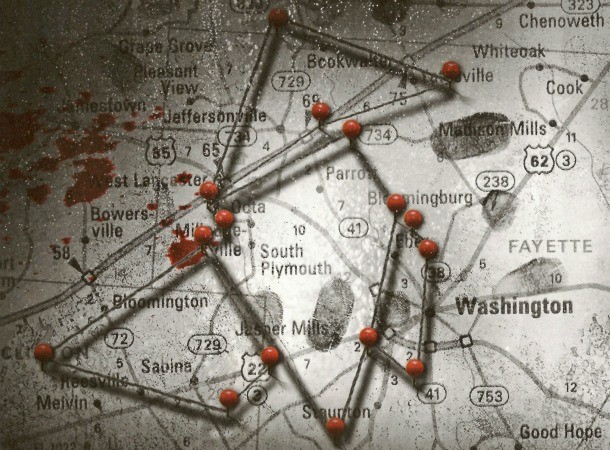
Heavy Rain
by Jeff Cork
The concept of freedom in games is illusory. By their very nature, games are governed by rules that steer players toward a shaped experience. Dragon’s Lair may have allowed arcade-goers in the ‘80s a paltry amount of interaction compared to modern games like the Sims 3, but in each example the creators laid down the laws, so to speak, before releasing their work.
This simple fact invalidates the argument that games lack authorial intent and are therefore not art but something else entirely. While games allow more freedom than passive media such as film, game designers take player action into account. Look at Heavy Rain, for example. An early sequence allows players to take control of a father, Ethan Mars, as he navigates his son Shaun’s early evening routine. A player might notice a checklist of responsibilities and their accompanying times – dinner, homework, then bedtime – and follow those guidelines responsibly. Others might choose to ignore Shaun and shoot hoops outside. Shaun reacts differently depending on how the parent player chooses to steer the evening’s activities, but the sequence inevitably ends with Shaun and Ethan going to sleep.
Heavy Rain borrows heavily from cinematic conventions in both storytelling and content, but those elements are often manipulated and subverted to take advantage of interactivity. Early in the game, Ethan and his family are shopping at a mall. It’s crowded, and Ethan momentarily loses track of his oldest boy. The boy has a balloon, which serves as a beacon in the swirling mass of people. It’s a scene that’s been done in movies and television before, but giving control of the sequence to players helps convey the terror and frustration of the situation. Simply watching a parent frantically try to locate a child in a crowd is gripping, but moving Ethan against the rushing mass yourself shows how games can expand on experiences with which viewers are already familiar.
Heavy Rain’s designer David Cage said the game would challenge players to see how far they would be willing to go to save someone they loved. Whether the game succeeds in doing so is irrelevant. Cage and the rest of his team at Quantic Dream created parameters and tested players to see how they’d react in a variety of situations, from mundane demonstrations of parenting to terrifying acts of violence. It’s a game – and work of art – that anyone interested in the potential of the form shouldn’t miss.
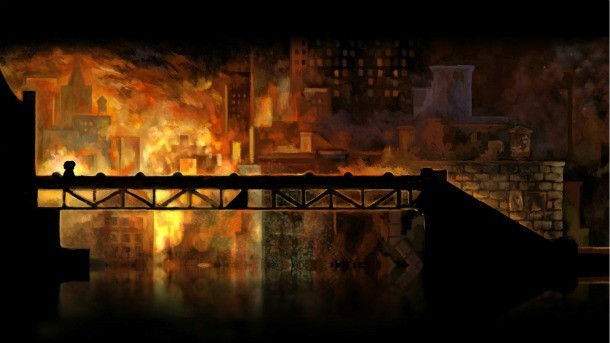
Braid
by Joe Juba
At first, Braid seems familiar. The gameplay shares traits with a multitude of other titles; players control a young man who rewinds time, stomps on enemy heads, and gathers collectibles. These activities, cleverly combined, form a remarkable and entertaining puzzle game – but that isn’t why Braid stands out as a prime example of video game art.
The ceiling of the Sistine Chapel didn’t become art by virtue of the paints used in its creation, and Braid should similarly be judged as more than an assembly of it components. The mechanics in Braid are in service to conveying a message – merely the paints used to define the thematic shape of the work. Whenever you rewind time, you’re reminded of the main character’s desperation to change the past. When you drop the ring, you can’t help but wonder about the finger it belongs to. Through gameplay, Braid keeps the weight of love, loss, and regret at the forefront of your mind…even if your overt goal is as simple as unlocking a door.
By slowly unraveling these emotional knots, Braid develops along parallel paths. Below the surface of the progression from one level to the next, a richly ambiguous narrative gradually comes into view. The prominent themes are accentuated by the game’s illustration (by artist David Hellman), music, and prose – all held together by the unified vision of developer Jonathan Blow.
While Braid is largely the work of one man, no single explanation encompasses the experience. Like countless great works, Braid is open to interpretation. Is it about a boy rescuing a princess? Escaping the demons of the past? The atomic bomb? Braid provides the gamer with multiple lenses through which to view the events, but you don’t need to choose just one – works of art can hold a different meaning for each person who experiences them.
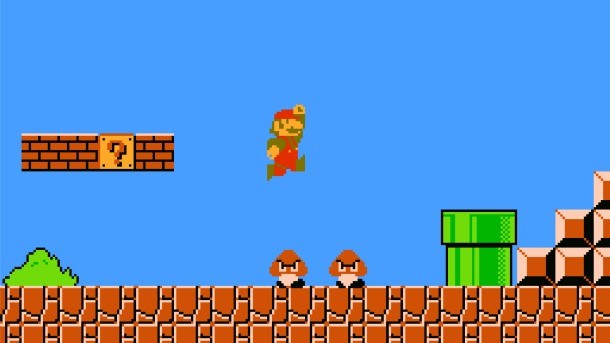
Super Mario Bros.
by Matt Miller
Video games are more than the sum of their parts, and their value as artistic objects emerges from that whole. To put it another way, there are musical themes, visual images, and writing within video games that qualify as art on their own. However, their synthesis creates a unique experience that is something new, exemplified in an early classic like Super Mario Bros.
Though childlike in presentation, Super Mario Bros. has an elegance and depth to its gameplay that challenges human perceptions and senses. The music and visuals act in concert to support that gameplay.
The game uses its first level to establish a vocabulary with the player – a first step into a wider understanding. Certain sounds equate with good or bad events. Run right, but don’t run left. Jump up into blocks to break them. Jump down onto enemies to defeat them. With this vocabulary established, the game moves forward into ever more complicated combinations of these events. Tension and danger are vicariously experienced as lives dwindle and the threat of a Game Over screen becomes imminent. Power-ups scattered throughout the levels communicate a sense of mastery and excitement to the user. Fantastic level design means that carefully placed platforms become better understood with each playthrough – how and where to land after a jump, how fast one can move through an obstacle, or hidden passages in places the gamer didn’t previously expect. Increased time with the game increases understanding of its intricacies, very like spending time contemplating a fine painting or a complex musical composition.
Ultimately, Super Mario Bros. is an artistic experience because, like all good art, it affects the one experiencing it emotionally and empirically. That experience varies from person to person, but there is always thought stimulated and understanding expanded. Even in its simple presentation, the game succeeds in drawing in the user and engaging them on multiple levels. Super Mario Bros. stands as a testament to the value of gameplay itself as an artistic experience – an experience that has been emulated by countless designers in the intervening years.
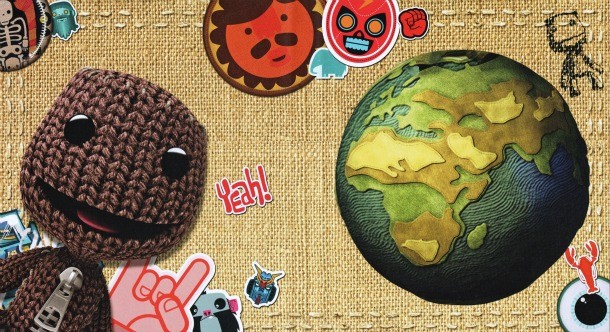
Little Big Planet
by Jeff Marchiafava
Like the first movies, LittleBigPlanet entrances players with the spectacle of seeing the familiar in a new light. Rather than trying to recreate our world with photorealistic graphics, the game employs bright, warm visuals that place an emphasis on texture not normally seen in digital mediums. Each object in the game is comprised of a basic material applied in creative ways: Grass is made from lush green felt, while clouds are fluffy white cotton. This simplistic representation of everyday objects feels new and familiar at the same time.
The game’s main character, Sackboy, is equally fundamental. Similar to the actors of silent film, Sackboy is the embodiment of performance art, using exaggerated body language and facial gestures to convey basic emotions. Like Buster Keaton or Charlie Chaplin, Sackboy uses slapstick humor to drive the story’s message of the importance of companionship. Without speaking a word, Sackboy has become one of the most unique and endearing characters of recent years.
LittleBigPlanet’s symbolic representation of life and world is not simply an aesthetic choice, but a function of the game’s core principle. LittleBigPlanet presents the player with a fantasy world born from imagination. This is not hyperbole, or the opening line of a fairy tale; the lands you explore are sculpted from primitive objects by their creators. The world’s inhabitants are pieced together and rigged like marionette puppets, and the music, lighting, and color palette are customized to coincide with the ambiance of the level. While this is true of all video games, the levels in LittleBigPlanet are not created by programmers, but rather storytellers, artists, and most importantly, you.
All of the levels in LBP can be recreated with an easy-to-use toolset included in the game. When I first played the game, it took me an hour or two before I realized this – I knew LBP let you create your own content, but I didn’t think levels made by players would be comparable to those created by the developers. When I saw that the user levels being shared online were just as intricate, professional, and creative, I understood that this game is more than a simple entertainment product; it’s a new creative medium.
Wherever human beings are given the creative freedom to express themselves, there is art. Most players will only ever use LBP to make simple platforming levels, just like most Hollywood directors will only make romantic comedies or action movies. But already players are using LBP in more imaginative ways, uploading their own virtual galleries to showcase their inventions. Combining graphic design, sculpture, and engineering, the artistic craftsmanship taking place in LittleBigPlanet obliterates the standard definition of what a video game is. How something that fosters so much creativity and promotes the exchange of user-made creations and ideas could not be considered art, is beyond me.
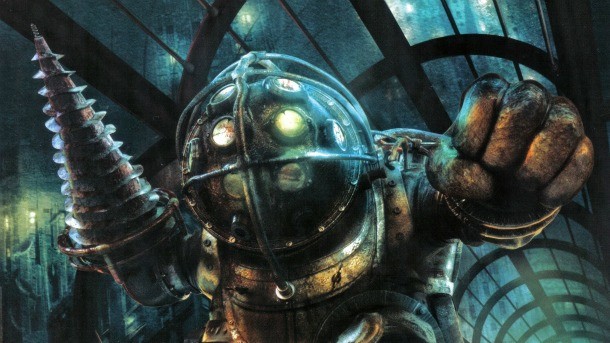
BioShock
by Ben Reeves
One line of thinking of why games cannot be art theorizes that interactivity inhibits the artist’s ability to convey an emotional message. In essence, the artist’s vision is lost if the audience has control over the experience. But the emotional punch of BioShock’s story would wilt if players did not drive the action. Two-thirds of the way through the game players are treated to a story twist that forces them to pause and reflect on everything that had led up to that point. Good art does that: It knocks us off our heels, and makes us look at some part of the world from a different angle.
On the surface BioShock tells a story about a failed utopian society, but it is about so much more. Its narrative examines the weight of choice, the importance of free will, the exploitation of power, and the corruptibility of government – a hefty chunk of philosophy for any medium to chew on. BioShock tackles all these themes with masterful skill. The game’s two iconic characters – the Big Daddies and Little Sisters – are tragic figures, and the game manages to make us care about them.
Then again, maybe what’s most impressive about BioShock is how it tells its story. Video game characters have a disability in that they cannot deliver facial expressions or gestures with the same level of detail as a live actor. BioShock’s characters faced the additional challenge of having to emote while the audience stared at a thumbnail-sized headshot. Despite being crippled in this way, the voice acting of BioShock’s characters evokes a high level of pathos that many professional films fail to achieve.
But art isn’t always about the story it tells; often it’s about emotion, form, and atmosphere. Visual artists of nearly every era have filled canvases with shapes that continue to deliver new experiences after multiple viewings. Rapture must have been built with this directive in mind. Every area in the game begs to be fully explored. From the water-damaged ceilings to the footprints left by the ghosts that walk its halls, every room in Rapture feels as though it has untold stories to share. Rapture’s glory can’t just be viewed; it must be walked through.
BioShock isn’t art because it’s constructed from a variety of artistic components. What sets BioShock apart is that all of its various pieces work in concert to deliver an experience that couldn’t be told in a film, couldn’t be written in a book, and couldn’t be shown in a painting. BioShock is a thought-provoking, exciting, and sometimes terrifying experience.










